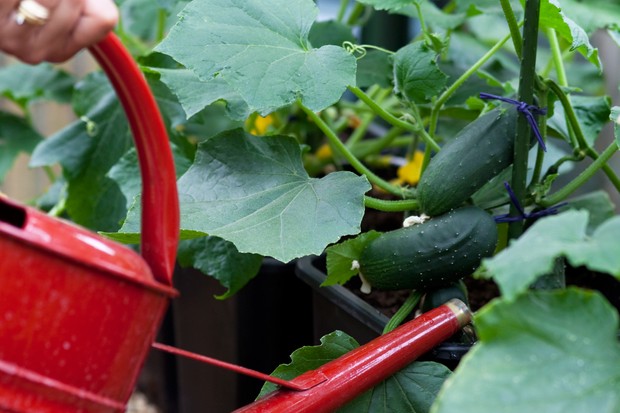
Summer can be a tough time for plants. During very hot spells, greenhouses and conservatories can become more desert than damp, while containers seem to become dry within hours of watering them.
By knowing which plants to prioritise, and when to water, you can make the best use of your time by watering those that need it most.
For example, plants requiring moist conditions, such as lobelia, or those in greenhouses and containers, need watering significantly more than mature trees, or drought-tolerant shrubs like cordylines and aeoniums.
Discover drought-tolerant plants to grow and our list of the best watering cans.
Save time and precious water by following our guide to summer watering, below.
The top priorities for watering are seedlings, cuttings and young plants, plus anything that’s been recently planted.
Water every day or two
The top priorities for watering are seedlings, cuttings and young plants, plus anything that’s been recently planted. Other thirsty plants are those potted in a greenhouse or conservatory, such as tomatoes and cucumbers. Water the trunk of tree ferns daily to create humidity.
Watering cucumbers growing in pots with a watering can
Plants to water:
- Tomatoes: when flowering and fruits swelling
- Cucumbers: when flowering and fruits swelling
- Garden peas: when pods swelling in dry weather
- Tree ferns: water the trunk daily
- Lobelia cardinalis: at home in swamps so requires moist soil
Water once a week
Next come plants with shallow root systems, including bedding plants and large, thin-leaved subtropical plants and ferns. Bog plants, moisture-loving perennials and many veg crops, like spinach, lettuce and celery will also suffer if left to dry out.

Watering young spinach
Plants to water:
- Brassicas: cabbage, cauliflower and Brussels sprouts
- Lettuce: especially when grown as a cut-and-come crop
- Spinach: prone to bolting. Crop can be ruined if it becomes dry
- Celery: needs plenty of moisture. Water twice a week if dry
- Hydrangeas: these water-lovers wilt quickly
Water once a fortnight
During long, dry spells, water plants that can normally fend for themselves, like clematis and roses, by soaking thoroughly once a fortnight. Also water fruit trees on dwarfing rootstocks, shallow rooted shrubs like camellias, and plantings from last autumn, in this way.

Mauve clematis in bloom
Plants to water:
- Roses: dry conditions encourage mildew
- Ornamental willows: tolerant but will suffer if left dry for long
- Clematis: these prefer cool roots and hot heads
- Eupatorium: these start to droop when dry
- Irises ensata and siberica: need lots of water
Avoid watering
Parts of the garden can be left unwatered to reduce dependence on irrigation and allow tough plants like verbascums to thrive. Don’t water mature trees, shrubs and hedges – it’s a waste. Lawns may also be left unwatered – if it goes brown, it will recover when rain arrives.

Tall spires of pale, orange-yellow verbascum flowers
Plants to leave:
- Cordylines: tough leaves retain their moisture
- Verbascum: thrive in dry soil where others can’t cope
- Periwinkle: born survivors, they thrive on neglect
- Aeoniums: succulent leaves store enough moisture to live
- Agave: infrequent rain is all that’s needed
Save water
In hot spells, save water however you can – read our guide to saving water in the garden.

